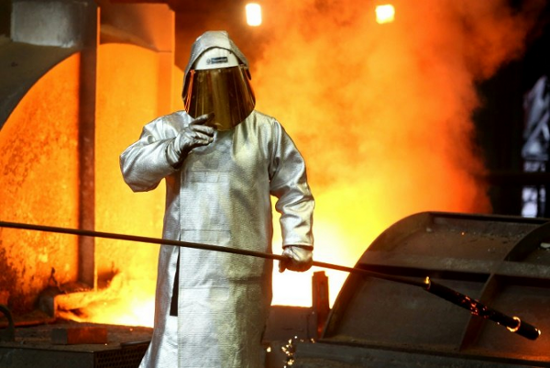![[Source: Phys.org ]](https://fabbaloo.com/wp-content/uploads/2020/05/Thyssenkrupp-Image1_img_5eb0a38ca2528.png)
Charles Goulding and Ryan Donley of R&D Tax Savers discuss the impact on 3D printing of restructuring at Thyssenkrupp.
Thyssenkrupp is a German multinational conglomerate with a heavy focus on industrial engineering and steel production. The company, which is the result of a merger of Thyssen AG and Krupp in 1999, became the tenth-largest steel producer in the world by revenue in 2015. Thyssenkrupp is divided into 670 subsidiaries worldwide and has an immense product range which includes high-speed trains, elevators and ships as well as industrial services.
Thyssenkrupp just recently restructured the company and split into two independently listed companies, Thyssenkrupp Materials AG and Thyssenkrupp Industrials AG. Both companies will continue to use the company name, except their individual strengths will now be maximized as two entities. Thyssenkrupp Industrials AG will consist of three units: the elevator business, automotive supplies and core plant construction, while Thyssenkrupp Materials AG will consist of materials services, marine business, and forging and bearings business.
Thyssenkrupp Materials AG just recently hit a landmark joint venture deal with India’s Tata Steel to become the second largest steel producer in Europe. The complete restructuring of Thyssenkrupp will take some years to complete, however top executives have set in motion a shift that would thrust much of the company into the technology sector.
![[Source: BBJ ]](https://fabbaloo.com/wp-content/uploads/2020/05/image-asset_img_5eb0a38d297cc.png)
While this recent restructuring may represent significant changes for the steel industry, advancements in technology are also contributing to this shift. Additive manufacturing, in particular, is expanding the capabilities of many companies, especially those in the steel industry. 3D printing of metals and plastics may be eligible for R&D tax credits.
The Research & Development Tax Credit
Enacted in 1981, the now permanent Federal Research and Development (R&D) Tax Credit allows a credit that typically ranges from 4%-7% of eligible spending for new and improved products and processes. Qualified research must meet the following four criteria:
-
Must be technological in nature
-
Must be a component of the taxpayers business
-
Must represent R&D in the experimental sense and generally includes all such costs related to the development or improvement of a product or process
-
Must eliminate uncertainty through a process of experimentation that considers one or more alternatives
Eligible costs include U.S. employee wages, cost of supplies consumed in the R&D process, cost of pre-production testing, U.S. contract research expenses, and certain costs associated with developing a patent.
On December 18, 2015, President Obama signed the PATH Act, making the R&D Tax Credit permanent. Beginning in 2016, the R&D credit can be used to offset Alternative Minimum tax for companies with revenue below $50MM and for the first time, pre-profitable and pre-revenue startup businesses can obtain up to $250,000 per year in payroll taxes and cash rebates.
3D Technology
The restructuring of Thyssenkrupp marks the beginning of core changes as the company begins to evolve their use of technology. At the forefront of this shift is the integration of additive manufacturing technology. The first 3D printers for Thyssenkrupp became operational in September of 2017 and since then the company has been working on accessing markets such as the aviation, automotive, and energy before moving onto covering even more sectors.
The dedicated 3D printing center in Muelheim an der Ruhr, Germany has been a large investment for Thyssenkrupp as production has been in high gear since opening. As mentioned earlier, production seems to be focused on a select few markets but, with the reputation Thyssenkrupp has in other fields such as elevators and ships, it would be no surprise to see custom 3D printed parts come from the them. Already industrial companies such as General Electric (GE) have developed methods for aircraft parts where 3D printing slashed the number of parts required for aircraft. Thyssenkrupp could follow up similarly for the elevator market as the complex parts required can be expensive to produce without a 3D printer.
![A metal submarine component made at Thyssenkrupp’s 3D printing center in Muelheim an der Rhur, Germany [Source: Thomson Reuters ]](https://fabbaloo.com/wp-content/uploads/2020/05/Thyssenkrupp-Image3_img_5eb0a38d8c653.png)
Conclusion
The merger between Thyssenkrupp and Tata Steel has paved the way for an ambitious business strategy that will build a more sustainable infrastructure under the company. The increasingly connected world that encompasses over 250,000 of the company’s customers has led to more intelligent products and solutions to meet the needs of global growth. The result has been heavy investment in 3D printing equipment and personnel to lead the company into a new era of technology.











A blog post reveals much of what happens behind the scenes at 3D print service Shapeways.